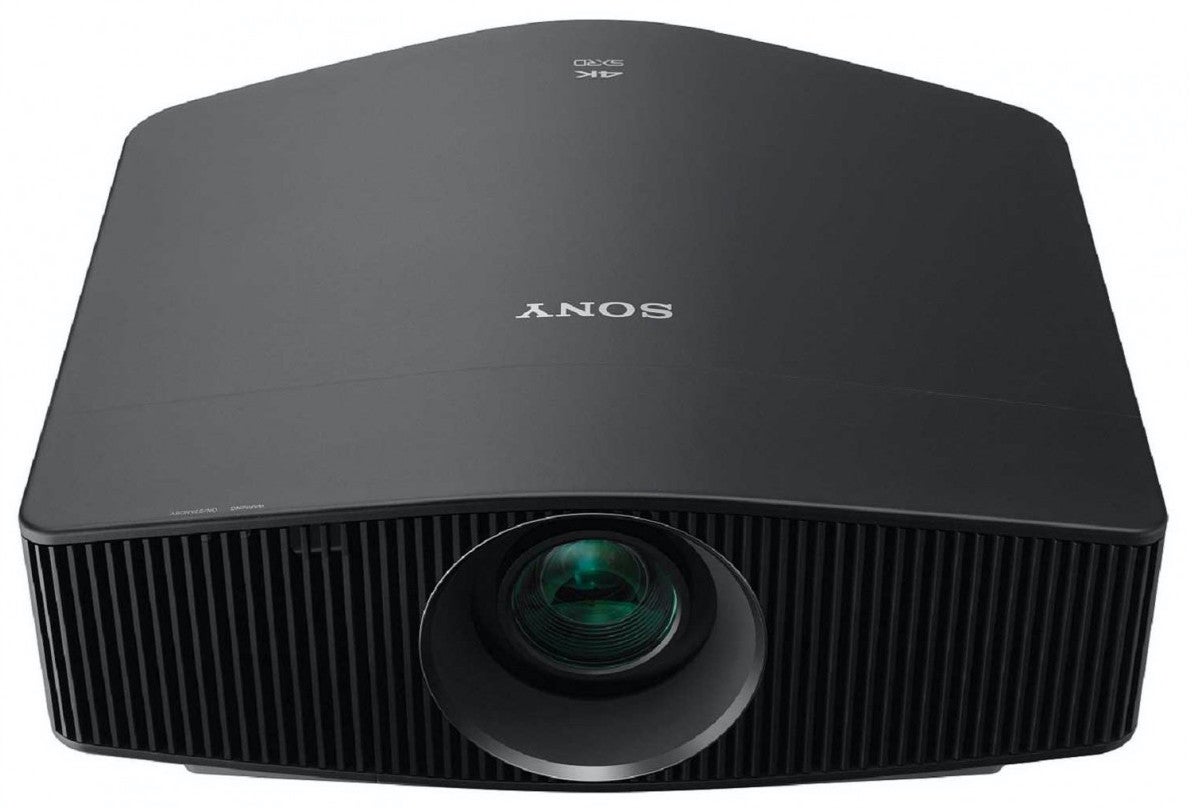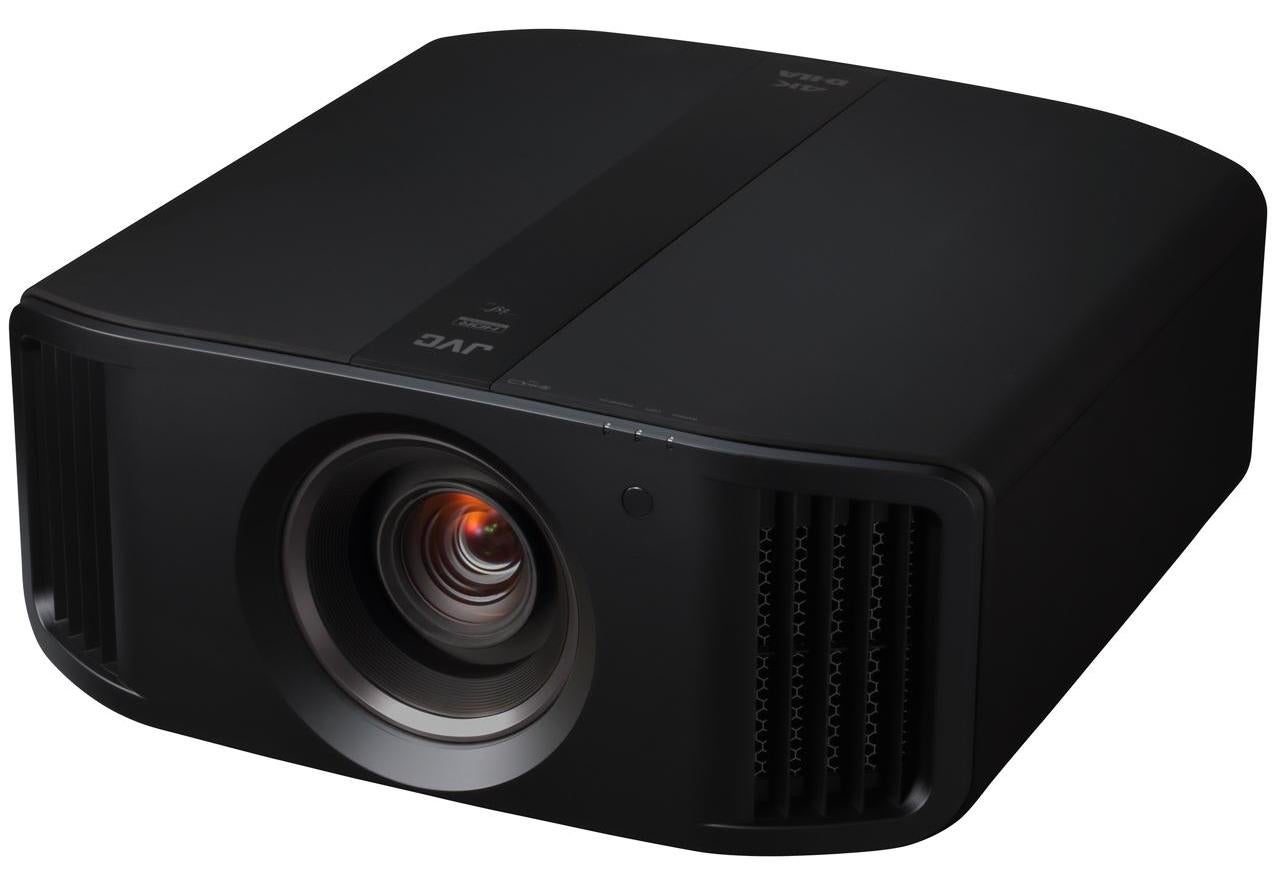Sony VPL-VW590ES Review
The most HDR-friendly lamp projector ever
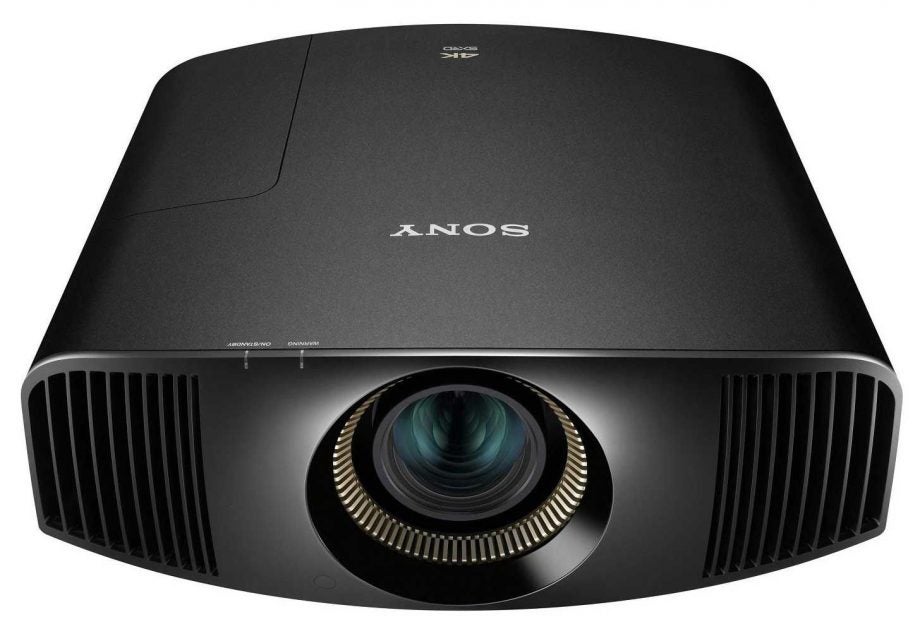

Verdict
The VW590ES proves emphatically that Sony’s new projection system for getting more impact out of HDR video can make a difference with more affordable lamps as well as laser projectors.
Pros
- Dynamic HDR Enhancer tech continues to impress
- Excellent all-round performer
- Much cheaper than the step-up VW790ES
Cons
- Not as bright as its laser-based siblings
- Minor colour striping
- Input lag not the lowest
Key Features
- Native 4K resolutionThe small pixel pitch of Sony’s SXRD technology has long made it possible for it to deliver true 4K projection where most rivals cannot.
- Dynamic HDR Enhancer technologyThis proprietary Sony system uses a combination of exceptional processing and light control to enhance the dynamic range of HDR sources.
- X1 For Projector processorAn all-new processing chip for Sony projectors built around some of the principles of Sony’s successful X1 for TVs processor.
- Lamp based projector systemThe VW590ES swaps the laser lighting of the much more expensive VW790ES for a more traditional lamp system.
Introduction
Sony’s SXRD home cinema projectors have a proud history, for first supporting native 4K resolutions, and then more recently for taking serious steps towards making HDR not only watchable (HDR having been designed with TVs in mind, not home cinema projectors), but actually seriously enjoyable.
The VW790ES we reviewed previously took this bold attempt to master HDR on a projector to a whole new level with its combination of laser lighting, a new X1 For Projector processor and, best of all, a new Dynamic HDR Enhancer system that somehow manages to boost the intensity of bright parts of HDR images without compromising the look of dark areas.
However, the more affordable VW590ES model looked at here trades the laser lighting for a more traditional lamp system. So the fairly straightforward question that needs to be answer is how much of a hit the VW590ES’s performance takes from losing the lasers.
Price and availability
At £6999, the VW590ES is hardly cheap by today’s projector standards. However, it’s a grand cheaper than its excellent VW570ES predecessor was at launch – and it’s only just over half the price of the step-up VW790ES. So, contextually speaking, its £6999 UK price actually looks like potentially good value. Especially when you consider that this is a truly native 4K projector, rather than a ‘pseudo’ 4K model like most of its rivals.
Availability
- UKRRP: £6999
- USARRP: $9999.99
- EuropeRRP: €6999
- CanadaRRP: CA$12999
- AustraliaRRP: AU$11999
The VW590ES is widely available globally. In the UK, it can be purchased from Sevenoaks Sound And Vision. In the US, where it’s known as the VW715ES, it can be had from Best Buy for $10,000.
Amazon Canada has it for $12,998, while in Australia it’s available for AU$11,999 from Sight and Sound Galleria.
Design
- Too large to be considered a ‘desktop’ projector
- Available in white or black finishes
- Fully motorised image setup
Sony has adopted more or less the same design for all of its consumer 4K projectors to date – and it isn’t changing things with the VW590ES.
I don’t take issue with this, though – the Sony 4K design happens to be pretty attractive. The gently elliptical sculpting, with curved top and bottom edges plus rounded corners looks elegant and ‘domesticated’. Also, the strikingly large, centrally mounted lens is highlighted by a distinctive outer cowl of angled gold lines that contrasts nicely with the rest of the bodywork, regardless of whether you opt for the white or black version of the VW590ES.
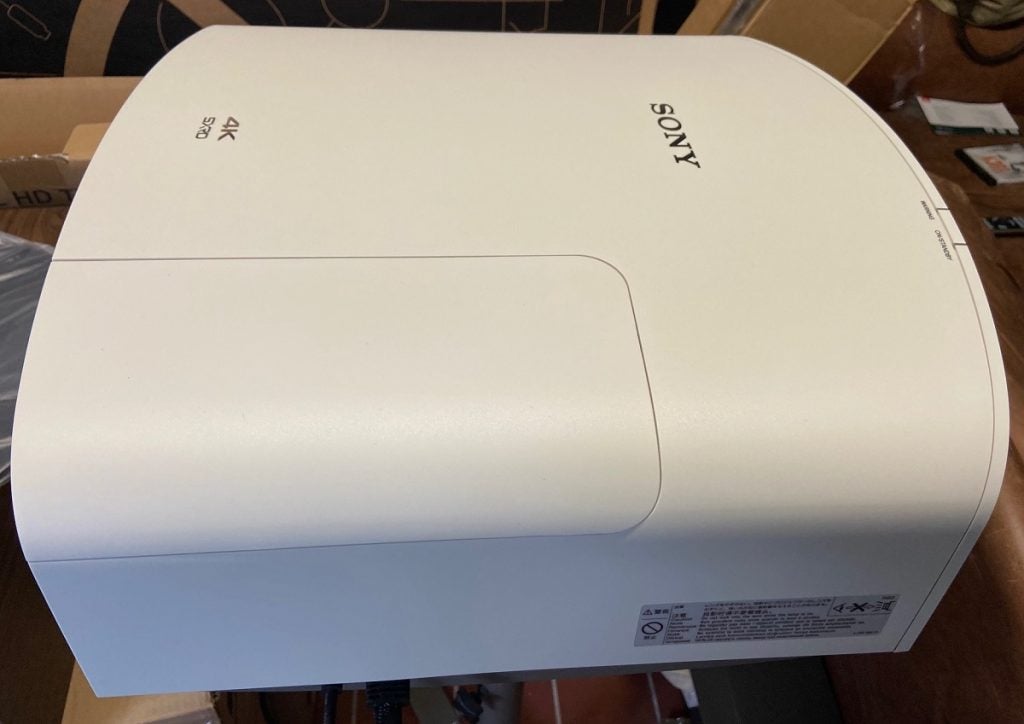
Large vents at the left and right edges of the front edge actually enhance rather than spoil the design, as well as pushing the heat away from your seating position (unless the projector is sited behind you, of course).
Build quality is excellent, and while the VW590ES is substantially larger than typical ‘desktop’ projectors, it’s about par for a serious home theatre model.
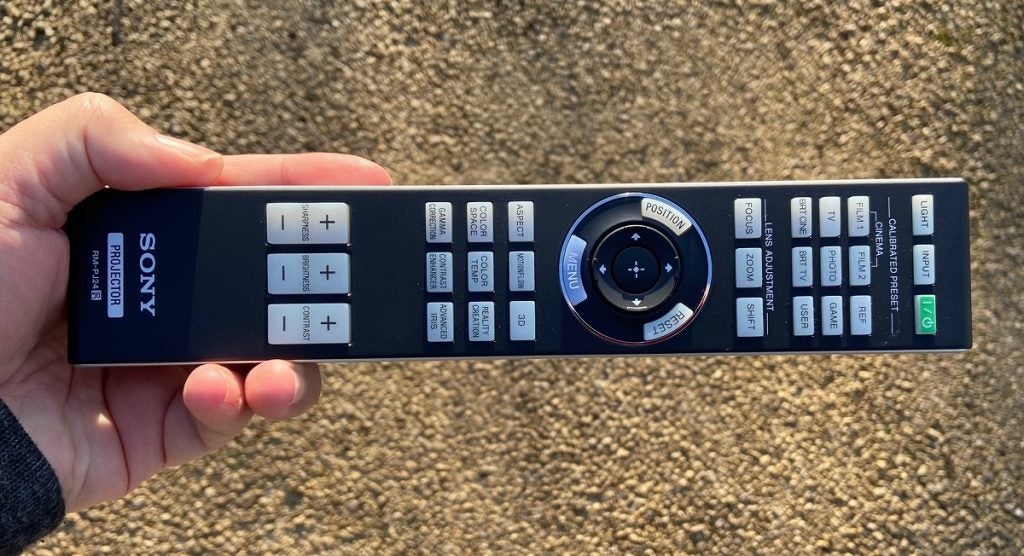
Features
- Native 4K resolution
- Important new Dynamic HDR Enhancer feature
- New X1 For Projectors video processor
Sony is no longer the only mainstream brand offering native 4K resolutions on its home cinema projectors. JVC has finally gone native 4K with some models, too. However, true pixel-for-pixel native 4K projectors remain a rarity in the projector world, with most supposedly 4K projectors using clever tricks such as pixel-shifting and ‘double flashing’ to deliver pseudo 4K effects.
The VW590ES improves on its already strong VW570ES predecessor in two key ways. First, it gets Sony’s new X1 For Projector processor. As its name suggests, this takes some of its principles from the esteemed X1 processor Sony originally designed for TVs. For instance, its Super Resolution Reality Creation element deploys Sony algorithms developed to enhance the crispness of all sources without simultaneously exaggerating noise.
The same system also claims to boost upscaling of sub-4K sources to the projector’s native 4K resolution. In fact, the iteration found on the VW590ES and VW790ES carries an extra element that targets very high-frequency image areas, such as hair, to avoid the sort of shimmering or glimmering noise that can accompany such finely textured image content with less adept upscaling systems.
In addition, for the first time at this level of Sony’s projector ranges, the VW590ES’s extra processing power also gets a Digital Focus Optimizer. This uses digital image processing to try to compensate for any localised blurring that might be caused by the projector’s lens. This is arguably more useful at the VW590ES’s level than it is with models higher up the range with more high-spec lenses.
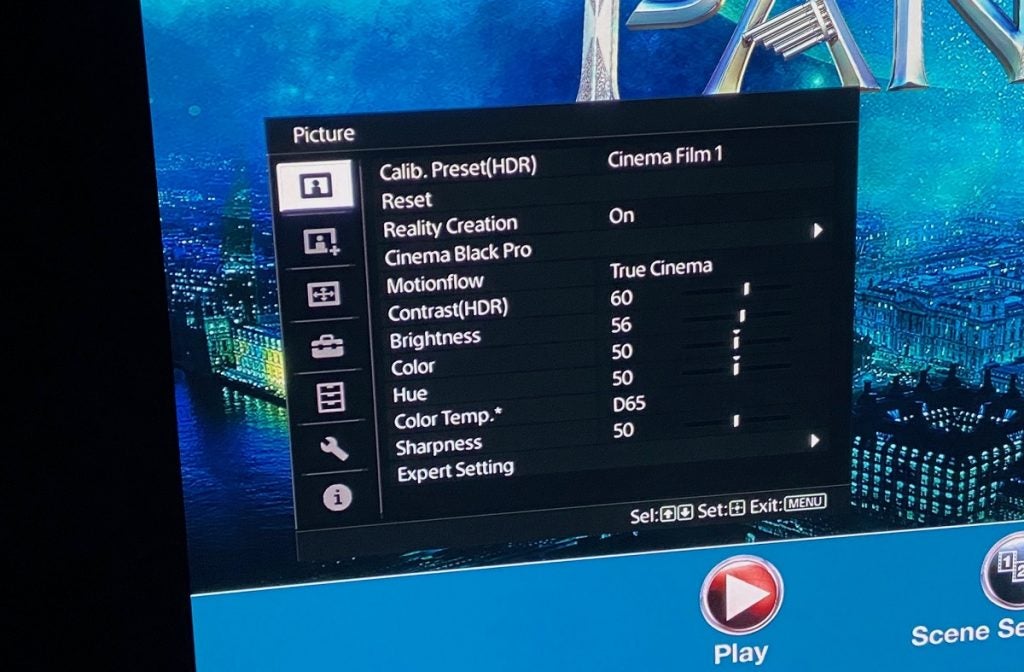
The X1 For Projector chipset also drives the second key new feature that sets the VW590ES apart from its predecessor: The Dynamic HDR Enhancer.
Impressively found right across Sony’s 2021 4K projector range, it uses advanced signal analysis to somehow boost the intensity of bright parts of HDR images without compromising the contrast performance of dark parts of HDR images. I say ‘somehow’ because, honestly, I still don’t know how the technology can achieve what feels like a local dimming effect without actually having any local dimming. More on this later.
The VW590ES’s lamp is capable of delivering a claimed 1800 lumens of light output (the same as the VW570ES) and an impressive-sounding contrast ratio of 350,000:1. It can play back 3D if you sort yourself out with compatible 3D glasses, as well as the HDR10 and HLG HDR formats.
Setup is aided by fully motorised lens adjustments capable of delivering vertical and horizontal lens-shift, as well as an impressive x2.06 of optical zoom.
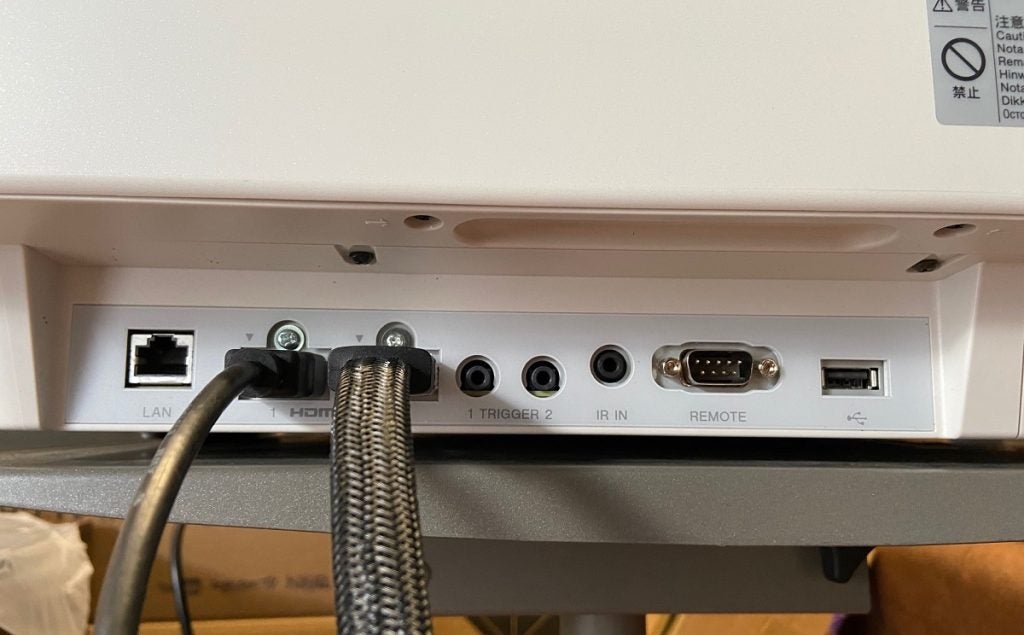
Finally, connections comprise twin v2.0 HDMI ports, two 12V trigger ports, an RS-232C control port, an Ethernet jack for system integration, an IR mini-jack, and a 5V USB. Note that the HDMIs can’t support next-gen gaming features such as 4K at 120Hz, or variable refresh rates. However, the VW590ES does carry a fast response setting for gaming that gets the time the projector takes to render images down to a respectable (though not spectacular) 35.5ms.
Picture quality
While the VW590ES’s pictures aren’t as full-on spectacular as those of the VW790ES, they’re a big step up from those of the VW570ES. Chiefly – although not only – because of the Dynamic HDR Enhancer.
As with the VW790ES, this feature enables the VW590ES to deliver an HDR picture that all-round more convincing than any I’ve seen before at this level of the projection market. As such, it lives up to its promise of substantially boosting the brightness of light highlights of HDR images, without compromising its (strong) black level performance.
So well does the Dynamic HDR Enhancer work, in fact, that it’s hard to believe that the image is being supplied by a regular, single projector lamp, rather than some fancy new technology creating an effect similar to LCD TV local dimming. It really is all achieved by processing in conjunction with excellent baseline light output controls, impressively accurate alignment of the three SXRD chips, native 4K support, and what appears to be a good quality lens.
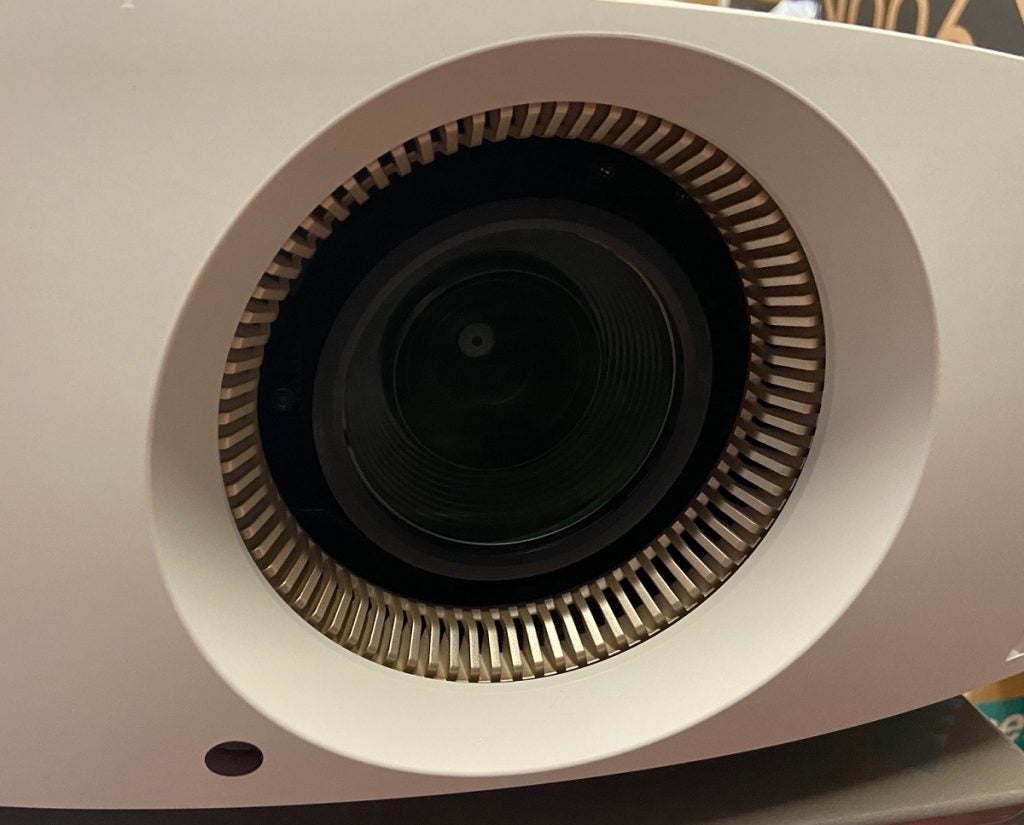
The VW590ES’s Dynamic HDR Enhancer effect doesn’t work in quite the same way as it does on the VW790ES. It still boosts the intensity of HDR highlights compared with the VW590ES’s ‘standard’ performance – but not as much as the laser model. It actually delivers slightly better black levels than its laser sibling, though, so that the overall sense of dynamic range with HDR sources still feels spectacular with the Dynamic HDR Enhancer deployed, despite the reduced peak brightness.
I’d recommend sticking to the Medium setting for the Dynamic HDR Enhancer, since the High setting can push a bit too hard, causing some details to be lost in the brightest areas. Otherwise, though, this feature is every bit as much of a game-changer on the VW590ES as it was on the VW790ES.
It’s impressive to see, too, that even though the VW590ES’s lamp system can’t enjoy the colour reach that laser systems can, the brightness boost delivered to bright areas of HDR images by the Dynamic HDR Enhancer is accompanied by a comparable colour expansion.
While the Dynamic HDR Enhancer is the VW590ES’s game-changer, it’s pretty heroic in other areas, too. Its native 4K resolution is blisteringly apparent with good-quality 4K sources, for instance, delivering a sense of clarity, depth and immediacy that for me runs beyond anything even the best pseudo 4K projectors can do.
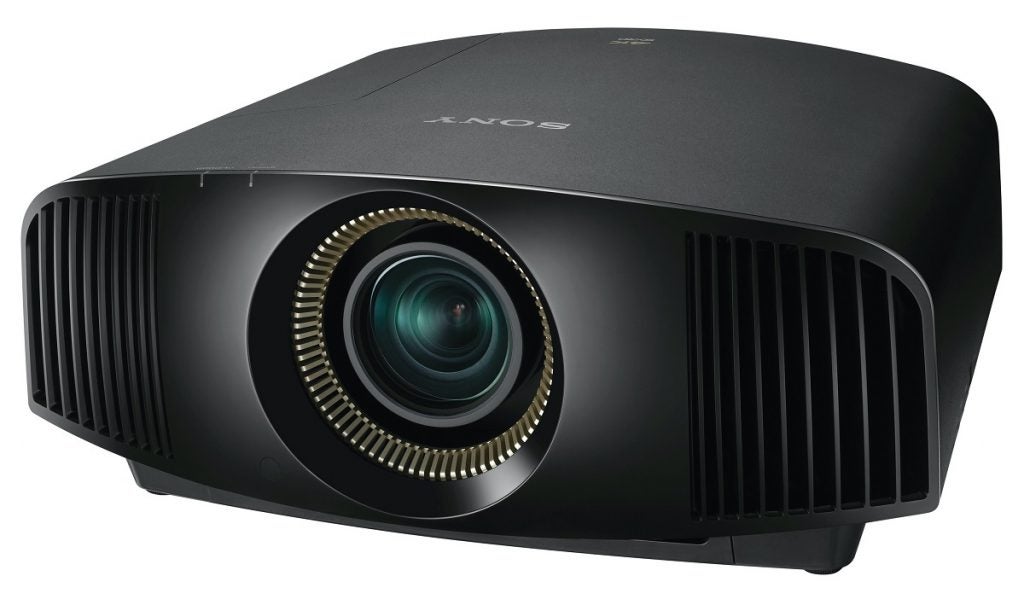
Sony’s excellent motion processing builds on the native clarity, too, providing options that keep the sharpness intact when there’s motion in the frame, without smoothing things so far that they start to look unnatural.
Having only mentioned black levels in passing earlier, it’s worth giving them a bit more attention here. For while the VW590ES can’t compete with JVC’s D-ILA models on this front, dark scenes nonetheless look engaging and convincing. The greyness hanging over parts of the picture that should look black is only very mild, and shadow detailing is consistently excellent.
Also very impressive is the stability of the image. Despite the projector depending on a dynamic iris for its contrast, you aren’t distracted by any over-aggressive brightness adjustments. An achievement that’s even more impressive given the dynamism the projector can produce with HDR.
While the VW590ES is a star with 4K HDR, it’s also an excellent handler of SDR HD. The X1 For Projector processor upscales HD – and even sub-HD – sources with real finesse and elegance, creating a natural, dense, refined image that invariably looks better than the native version.
The Super-Resolution Reality Creation system proves much more intelligent than its predecessor, adding extra detail and sharpness while also making the results look more natural. There’s plenty of welcome fine-tuning for this feature, too.
Applying my harshest eye to the VW590ES, there are one or two niggles. Colour blends with HDR sources can exhibit a touch of banding, despite the efforts of the X1 For Projector chipset. Also, since it isn’t as bright as the VW790ES, on occasion shadowy areas of mostly bright HDR images can lose a little subtle shading detail. However, this can be improved without messing up other aspects of the image, simply by upping the brightness setting a few levels.
Finally, the VW590ES’s cooling fans in HDR mode (when the lamp has to be running at its brightest) are just loud enough to potentially become a distraction if you can’t place the projector a little away from your seating position. The noise is at least smooth enough to tune out, though, and the projector becomes all but silent with SDR.
Worries that the brilliant new Dynamic HDR Enhancer feature that worked so phenomenally on the laser-based VW790ES might not translate well to a more affordable lamp-based model prove unfounded.
Yes, the VW590ES can’t get as bright as the VW790ES, or do black levels as well as the latest JVC D-ILA projectors. However, the way it combines still-impressive black levels with enhanced local brightness and colour results in a beautiful, expanded dynamic range experience with HDR content that goes beyond anything else I’ve seen for the same money.
Should you buy it?
You want HDR to look good The VW590ES is the most convincing lamp projector with HDR that we’ve seen to date.
£7K is too much for you While I’d say the VW590ES justifies its price, much cheaper home cinema projectors are available.
Verdict
The VW590ES proves emphatically that Sony’s new projection system for getting more impact out of HDR video can make a difference with more affordable lamp as well as laser projectors.
FAQs
The Sony VPL-VW590ES offers 1800 lumens of brightness.

